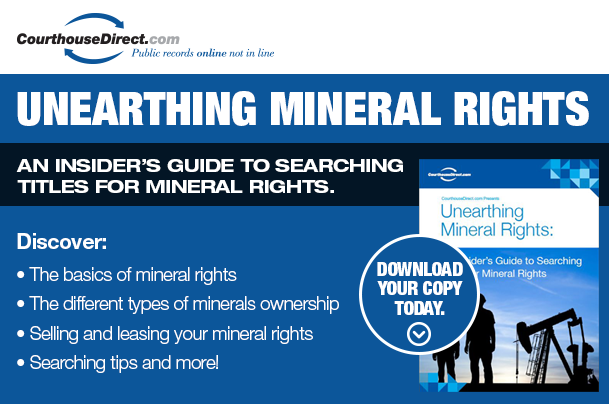 The land we live on has been around a long time, so it’s only natural that various parcels of this land may have changed ownership several times. This ownership gets complicated when you consider that while one person or entity may own the surface of the land, a completely different entity might own the land underneath – the so-called mineral rights. A third party may even be involved through royalty rights.
The land we live on has been around a long time, so it’s only natural that various parcels of this land may have changed ownership several times. This ownership gets complicated when you consider that while one person or entity may own the surface of the land, a completely different entity might own the land underneath – the so-called mineral rights. A third party may even be involved through royalty rights.
To identity just who owns the land on which you’re living, you’ll need to start at the county or district clerk’s office where all the records of the surrounding county or district land are located. You can hunt through these records yourself at no charge. Another option is to visit a private abstract office where you will be charged for any services up to and including simply looking at their index books.
What Am I Looking For?
To find the land records you need, you’ll need to know either:
- The legal description of the property, or
- The name of the property’s grantor/grantee.
The index books will have a listing of the documents you’ll need to construct a chain of title.
Some states use the Public Land Survey System (PLSS) of land division. Otherwise, the system used is made up of “metes and bounds” or other types of legal description. Some indexes may only have lists of grantors/grantees. A tract index owned by an abstract office is then used to obtain required details and descriptions of the land.
Chain of Title
A chain of title is a sequential record of documents recording every legal owner of every part or parcel of a property. If the land is public or has been in the same family for generations and they have never given up ownership of the mineral rights, this chain of title can be short and sweet. On the other hand, it can be unbelievably complicated when you take into account changes of ownership occurring through death, divorce, sale(s), loan defaults and/or the splitting of mineral rights ownership/
The more times ownership of an individual parcel of land changes, the longer and more complicated the chain of title gets. Finding all of the relevant documents, called conveyances, can often become a challenge worthy of Sherlock Holmes.
Conveyances
A conveyance is a legal document that “conveys” ownership from one entity to another. Unfortunately, this can’t always be determined by the title of a document. For instance, a document may be called a “Mineral Deed”, but when you read it carefully, you’ll find no language about mineral rights in the body of the document.
In other cases, a gap may occur in the chain of title where a source deed is not available. You may find that someone has filed a document to sell or lease a piece land, but the source deed showing legal possession of that land is missing. A gap like this places a “cloud” on the title until the missing conveyance is found.
Closing gaps in a change of title means you must locate any and all missing conveyances. They may be found in divorce settlements, tax sales, probate files, mortgages, affidavits, liens or foreclosures. For example, the land may have been incorrectly described and the deed might have been misfiled. Perhaps a past owner defaulted on a bank loan and the bank now has ownership of that property. It’s important to take these possibilities into consideration when locating conveyances.
There Must Be an Easier Way
There is, but it can get expensive. Still, it might be worth it if the chain of title is needed for legal purposes. There is a wide array of professionals who have the expertise to find the information you need, including landmen, whose job it is to find and negotiate ownership of mineral rights.
You can also purchase a “take-off” from the local abstract office. This is a listing of the pages and books where the information you need is stored. This is less expensive than having someone else do all the work for you, but make sure to verify the quality of the abstract office you are dealing with before handing over your money.
With this information, you’ll be better versed in the technicalities of land ownership – and have a stronger foundation when deciding between a DIY and professional approach to determining who owns the land you live on.
* Image courtesy of stock.xchng





















